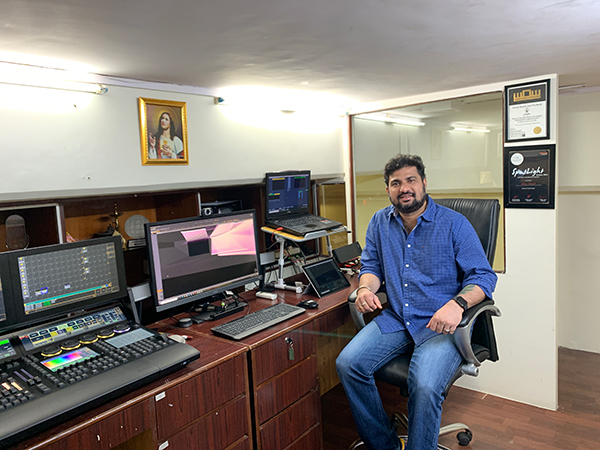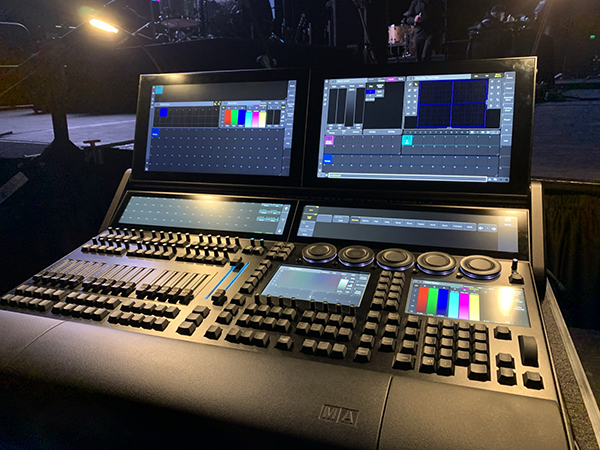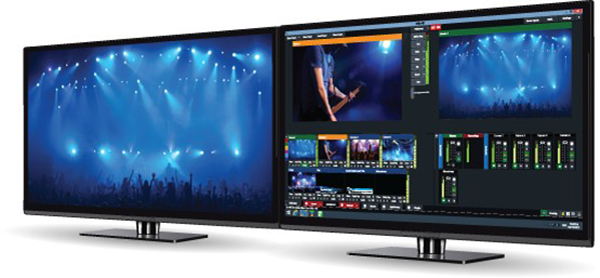INTERVIEW – LIGHTING DESIGNER
Ray of LIGHT
In Conversation with Becket Tundatil

Becket Tundatil
The Coronavirus has disrupted industries from all sectors including Lighting. The outbreak has left a significant impact on the events industry with shows being postponed or cancelled.
PT spoke to Lighting Designer Becket Tundatil to get his take on the current situation and the future of lighting design in the virtual space.
Becket Tundatil is a lighting designer with vast experience in the entertainment Industry. He has designed musicals, concerts, television reality shows, corporate events and award functions. He is currently focusing on setting up his designing firm Fireflies Architectural Lighting Company that will focus on the fundamental aspects of illumination of structures and spaces.
How has the Pandemic affected your work as a lighting designer?
The kind of shows I have been associated with are generally large scale involving huge audiences so the impact of the pandemic has been quite hard. However, with extra time in hand, I got the opportunity to research lighting which I always longed to do. It is fascinating to learn about the evolvement of the lighting industry over the years specifically stage lighting. I also enrolled in some specialized lighting courses online to enhance my skills. We also got a chance to develop some plots and demos for our clients for the pre-visualization of their shows. Hence, though it has been productive in terms of knowledge but shows wise it has been a slowdown. Earlier with back to back shows and working on multiple shows at the same time, the current period has certainly given me some time off to rethink and realign to update my workflow.
Have you done any work during this lockdown? Were you in the process of doing something before the lockdown happened?
Just before the lockdown, I completed two award shows that were televised. I did the Mirchi Music Awards, Mirchi Top 20 Awards, and VH1 Supersonic in February. Then we did the A R Rahman Pune Show. We did all this just before the lockdown, so every week we had one show to do right up until the lockdown was announced.

The latest MA3 console supplied on priority to Tundatil by Rajan Gupta of Hi-Tech Audio Systems Delhi - official distributors of MA Lighting in India. This full size console has been used by Tundatil for events like, Mirchi Music Awards 2019, Mirchi Top 20, Supersonic 2019 and various A R Rahman live concerts. The board currently sits pretty on Tundatil’s workstation and is being used for virtual setups, giving Tundatil a massive opportunity to enhance his skills for live shows, television shows and virtual set ups
How is the current environment affecting lighting design? What has been the hardest part for the industry and lighting designers in these past six months?
I have been in touch with other lighting designers. Many of them have mentioned that there are a lot of safety norms that have been introduced in this pandemic. I think some of the lighting designers I know have started to work with corporate events, fashion shows, and the kind of shows where there is control over the audience and technical crew. Even though the televised shows have started, it is being done without the audience and everyone is working towards maintaining the quality of the shows as before. The budgets have also been cut down drastically for everyone but the references and expectations are as before. It is challenging for everyone to deliver in such situations.
Lighting designers always keep evolving and upgrading themselves - from show to show from season to season. What has slowed down is that we are not getting a chance to try new things. For example, the MA3 was launched and everyone was very excited about using it in the industry but we haven’t got a proper chance to do so. Even Hi-Tech Audio in Delhi, who is the MA distributor in India, had provided me with the MA3 just before the lockdown and I was in touch with some clients to start using the MA3 in particular shows, but we couldn’t try out the new gear to the fullest and upgrade our knowledge of the system. Also, every few months we would have new products launched in the international market and right now there is a slowdown on that front as well. Since there is no demand for new products, there is nothing new coming which is effecting the lighting designers as well.
If the Pandemic has seen a constraint on budgets, how do you manage to give your clients what they are looking for within these constrained budgets?
It's not new for us to deliver quality with constrained budgets. We are used to such scenarios where the expectations are very high as compared to the budgets proportioned for it. By reducing the gear and altering the types of lights, we work around the client's budget to give maximum output. For instance, there have been times when we have used moving heads for face lighting. The motive is to deliver the best quality and maintain a balance among all departments – production, lighting department, and the rental company.
How are lighting designers and the industry working in tandem to cope with the situation?
The current situation is tough for all. In the beginning, some of the key players of the entertainment industry organized some very well-curated online sessions where we got a chance to share our experiences and knowledge with others. A basic lighting training module was also shared for the in house managers of event companies. This was very motivating for us as well to keep our spirits high. I am also aware that lighting designers are being called upon for the smallest possible shows by the production houses and event management companies to keep the ball rolling so its all a teamwork
Resolume Arena the tool used by Tundatil for video control
How do you see the future of the lighting industry post the lockdown?
The future of the lighting industry seems quite positive and I think that post the lockdown once the industry operates without restrictions, things will boom. I am certain that this time has helped lighting designers and production houses to come up with unique concepts and ideas which can be implemented in due course of time. As for me, I am also gearing to use new types of software and console to raise the bar.
What kind of future do you see for the Lighting industry in the virtual space?
Anything is possible in the virtual space. It is still being explored with various combinations and I am sure for the lighting industry it will open up a lot of creative boundaries. The visual experience a lighting designer can bring out in the virtual space is limitless and how intelligently and creatively it can be made be virtually real is what is exciting.
Have you done any virtual shows during the lockdown?
Currently, we are in the process of doing a few virtual shows for different clients. Initially, everyone believed that this wouldn’t last too long but now the situation has changed. At the moment I am working on a virtual show for a renowned musician which is still in the design phase. I have also developed a recording and a live stream set up in my studio, which can handle any scale of virtual shows. It is a unique setup that gives a client the freedom to make changes on the go while keeping the overall experience very similar to a real show.
Can you please give us the knowhow of what goes into making a virtual show, what is the process involved and technicalities? How is doing a virtual show different from doing a live show?
The technical process is quite similar to live or television shows. However, here we don’t use actual fixtures during the set-up. It’s all visualization done on software. We start with a venue and stage design which is made keeping the show flow and content in mind. Later the lighting design and video design comes into play, followed by the sound technicalities. Then we go through the preprogramming stage where the whole show detailing is checked from video, lighting, and sound point of view. And the final stage is either recorded or streamed as per the client’s preference.
Cubase software used by Tundatil for sending time code signals to the lighting consoles
For large events, we already have software that we use for visualization, like Wysiwyg & Vision; these create a virtual environment. We call this the pre-visualization stage. The purpose of the pre-visualization stage is to show demos to clients, to pre-visualize a show for the artist before we go on the ground. So in that sense, these are all virtual environments that I was already working with in the live events space; we were always involved in a virtual shot, the props, the light, etc. We always worked in the virtual environment; it was a part of lighting for some of our shows as they demanded a virtual rig and pre-visualizations in the past.
But the virtual shows that happen nowadays require the artist to be merged in the same frame.
And how are you making sure that you still give the virtual events, that same feeling of being at a live concert or a live show?
A live concert is an experience that cannot be replaced by virtual. We can have the most magnificent set design with spectacular lights and video but the joy of being in a live concert is different. Sound also plays a very important role. What I feel is if the experts of different areas come together cohesively to create something it would work better. Right now for example, since I am a lighting designer I am focusing on a great visual experience enhanced with lights but even I know there is way more than my imagination. So the best way of getting closest to a live experience in a virtual show is to make it an overall visual delight for the viewer.
What kind of challenges do you face when you are doing a virtual event?
A virtual event is designed and executed technically with an amalgamation of sound, light, video, and content. For all these to come together seamlessly, the internet and digital communication play a pivot role. We have to ensure the internet and data is glitch-free.
What excites you about the lighting technology today?
It has been amazing to see the changes in the lighting industry over the last decade in terms of the number and type of lights used in shows. Earlier there were availability issues, logistics, and extremely conservative budgets. Nowadays we get what we ask for. Even the clients are always ready for something new. The suppliers are moving with time and upgrading their gear and inventory. In terms of consoles as well, we have Avolites, Chamsys, MA Lighting, Chroma Q Vista & Wholehog, and many more options to work with these days and you can choose according to the show you are working on.

Live Video Streaming Software VMix
What development you would like to see for the lighting design industry in the next five years?
Remote operation and execution of shows. So years back I had done a show which was the Tamil adaptation of the game show Kaun Banega Crorepati. Since I was the designer for Kaun Banega Crorepati for the Hindi version (this was 14 years ago), I was also called in to do the designing for all the other regions as well. I had already designed everything in the studio but the technical direction team was not very confident with me leaving before the shoot started, so I told them if they need any kind of help, I can reprogram the whole thing from wherever I am. I sat in Bombay and made changes to a lighting console in Chennai. We can control the lights of a venue from home, I think I want to someday get into space where we have designers who could sit in a studio and control the lighting of venues in other parts of the world. That is something that I am looking forward to. I want our industry to accept technology like this in the future. Right now, it is possible but there is hesitation to accept it. This can bring down the costs remarkably as well. It could also bring in a great change in designing and execution of lighting.
What’s the next project on your agenda?
I am in the process of putting together a design and inventory for an open-air concert venue in Uttrakhand. As a part of this, we are also doing architectural light installations for the same client . A similar project is being discussed in Coorg. Some high profile weddings are in talks. I have also been contacted for a televised reality show but the dates are unclear. I also feel the virtual shows in some form will continue post normalization.